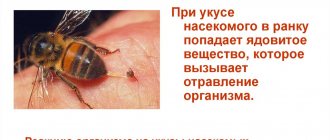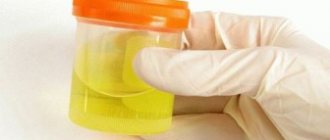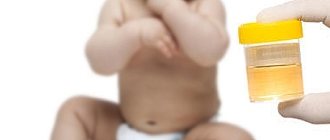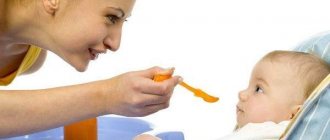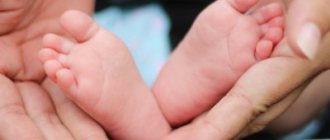It is necessary to call an ambulance for a child in several cases: if the child has a very high body temperature, convulsions, severe abdominal pain, swelling with a rash and difficulty breathing. Keep in mind that in some cases you simply cannot hesitate! After all, the sooner a child receives qualified medical care, the greater his chances of a full recovery. If the health of your child depends on the speed of your reaction, you must act decisively. And don't be afraid to play it safe! If the ambulance team is not there for half an hour, do not waste time and take the child to the nearest hospital yourself, he must be examined there! Call a taxi or hail a car on the street.
At what temperature should you call an ambulance in a child?
If a child has a common cold, the local pediatrician will prescribe treatment and the illness will soon go away. However, high fever in children often accompanies other illnesses. And in some cases you need to immediately call an ambulance.
— Against the background of a high temperature, the child begins to vomit. Theoretically, this could indicate both ordinary food poisoning and the reaction of the child’s nervous system to fever (a spasm of the esophageal sphincter occurs). However, he definitely needs urgent help! After all, vomiting sometimes indicates serious meningitis or a serious intestinal infection, in which dehydration quickly develops.
— The child developed a rash of any nature. Purple spots or a rash in the form of bruises that appear right before your eyes should be especially alarming. These are signs of meningococcemia, a dangerous infection. The child urgently needs antibiotics!
- Headache, lethargy, lethargy, drowsiness in a child with a temperature above 38.5 C is a very serious symptom, indicating a severe infection. Doctors from the ambulance team will provide first aid and take the child to the hospital.
— Fever in children can be brought down with ibuprofen or paracetamol in an age-appropriate dosage, but if you notice that the drugs do not work and the child’s temperature does not go down, call an ambulance.
Causes
Firstly, if any system of the body malfunctions, this is reflected in the nature of biological fluids, in particular urine. When examining a material in the laboratory, special attention is paid not only to the chemical composition, but also to the smell, density, shade, and the presence of visible atypical inclusions.
In children of the first year of life, urine is not as rich in color as compared to adults. Almost always, a child’s urine is transparent if we are talking about infants. This difference is not a deviation, since in babies the kidneys do not function fully, and the diet consists exclusively of formula or breast milk.
The appearance of clear urine in a child. Source: etopochki.ru
But in the case when a child’s urine is colorless, but shortly before it had a straw-yellow hue, there is cause for concern. Therefore, the only right decision would be to visit a pediatrician. It is also equally important to undergo a full medical examination, which will help determine the cause of the changes.
When a child’s urine is light and its daily excreted volume has increased, the provoking factors may lie in the following pathological processes:
- Diabetes insipidus. With this disease, the patient suffers from a constant feeling of thirst. As the child begins to drink a lot of fluids, urine loses its natural color. That is, it becomes discolored.
- Diabetes. The pathology is a consequence of a complex disruption in the functioning of the endocrine glands. The main symptoms also include increased thirst, and, as a result, loss of color of the biological fluid.
- Kidney failure. Transparent urine in infants and older children occurs when the filtration organ does not function properly. Since the body cannot absorb the required amount of fluid, dehydration occurs.
Another common reason for changes in the color of urine is the consumption of certain foods that contain large amounts of water. With such a diet, the kidneys actively work, aimed at removing water. As a result, the biological fluid becomes discolored.
- Cloudy urine in a child. Why does my child have cloudy urine? What to do if your child has cloudy urine
Sometimes it happens that children's previously colorless urine turns white. In this case, the progression of pathologies affecting the organs of the urogenital tract cannot be ruled out. In addition, this symptom may indicate filariasis, in which there is an increase in lymph levels. When the body is dehydrated, an identical situation occurs.
The child is dehydrated
Children under 3 years of age become dehydrated much faster than adults. It is enough for them not to drink the required amount of liquid for several hours in case of high fever or vomiting. It is important to prevent dehydration in a child and know its signs so that at the slightest threat you can call an ambulance.
How to give water to a child who is dehydrated
Loss of fluid and mineral salts occurs at high temperatures, as well as with any other diseases accompanied by vomiting and diarrhea. This can be either an intestinal infection or an acetone crisis. Therefore, drinking plenty of fluids is a prerequisite for treating a child. Offer him clean water, compote, herbal tea, such as chamomile. If your child refuses to drink, add a little sugar to the drink. It is important that he drinks as much as possible during his illness. A special situation is uncontrollable vomiting. Then the child should be given water according to the following scheme: 5 ml of liquid every 5-10 minutes. This algorithm will ensure that at least some liquid is absorbed by the body. If the child categorically refuses to drink, call the emergency room!
Symptoms of dehydration in a child
A well-hydrated child should urinate every 4 hours with light-colored urine. If this occurs less frequently, it is possible that the child’s body is dehydrated. If dehydrated, he may develop bad breath, and the mucous membranes and tongue will be dry. Pronounced drowsiness or, conversely, unnatural agitation are also symptoms of dehydration in children. In children under one year old, when dehydrated, the fontanel collapses, and when crying there are no tears.
A child with dehydration must be hospitalized immediately. In the hospital, fluid loss will be replaced intravenously using a drip. However, it is in your power to prevent this from happening! Remember: it all depends on how much the child drinks when he is sick. So keep a close eye on this.
Urine clear as water: reasons
Causes of clear urine:
- Most often, clear urine indicates possible diabetes. Many doctors note that people who suffer from this disease drink a lot of water and are thirsty. This is due to the body trying to eliminate excess glucose through urine. The person begins to drink a lot, and the urine becomes lighter.
- The reason why urine may become discolored is due to kidney failure. Perhaps the kidneys are not working as they should, they are under a very heavy load. A general urine test will help solve all problems and get rid of worries. This is a quick procedure, so you will get results the next day.
- It is worth noting that evening time is not the best option for assessment. The fact is that urine collected early in the morning, after sleep, is indicative. Thus, a large amount of fluid collects in the kidneys, which is excreted early in the morning. It is this urine that is indicative, and its color is worth focusing on.
- Often, a change in the color of urine is observed with polyuria. This is a disease that causes frequent urination. In this case, the patient goes to the toilet quite often, but in small portions. The color of urine changes significantly and becomes almost colorless.
Urine for analysis
The child has seizures
Most often, convulsions in a child are a consequence of a sharp rise in temperature. Such seizures are called febrile and occur in 2-5% of children under 6-7 years of age. However, there is a risk of more serious illnesses, such as meningitis or another infection that affects the nervous system.
If a child has seizures before the ambulance arrives:
- Place the child on a flat surface away from sharp, heavy objects. The safest position is this: the child lies on his side, his head turned down. This position prevents saliva from entering the respiratory tract. But you don’t need to put anything into your child’s mouth yourself.
- try to remember the duration of the attack and its external manifestations. This information will be useful to the doctor to make the correct diagnosis and help determine the tactics for further examination and treatment. Pay attention to the following points: the presence of consciousness (whether the child reacts to anything during seizures), posture, position of the torso and limbs. The main thing is don’t panic!
The child has an immediate allergy
Allergies in a child can manifest themselves in the form of skin rashes. Or more menacingly - in the form of anaphylactic shock or Quincke's edema. An extreme allergic reaction can be triggered either by contact with a medicinal allergen (most often antibiotics) or by an insect bite. It is important not to get confused and quickly call an ambulance for your child.
Anaphylactic shock in children
The first symptoms of incipient anaphylactic shock are a feeling of fear in a child, a throbbing headache, numbness of the lips and face, dizziness, tinnitus, vomiting, cold sweat, and urticaria. Before the doctors arrive, place the child on a flat surface. Keep his head turned to the side and make sure that no vomit enters the airway. Keep your child warm and provide him with access to fresh air.
Quincke's edema in children
The child's face (eyelids, nose, ears, tongue) suddenly swells and turns red. Swelling can also be localized on the genitals, hands, and feet. Until the ambulance arrives, give the child an antihistamine in an age-appropriate dosage. To quickly remove the allergen from the body (usually insect venom), give the child water and some sorbent (smecta, enterosgel). And keep calm! The doctors know what to do and they will definitely help the child.
Child has abdominal pain
Children complain of abdominal pain for various reasons. Most often, the child ate something wrong. But acute pain cannot be confused with anything. The child is holding his stomach and crying a lot. You can't give in to emotions now. You need to call an ambulance. First of all, doctors are obliged to exclude surgical pathology - appendicitis or volvulus.
Appendicitis in children
Inflammation of the appendix is a fairly rare occurrence in children under 3 years of age. However, you should still play it safe and agree to be examined by a surgeon in the hospital. After all, in this case there is only one treatment - surgery, which needs to be done as quickly as possible. Never give your child antispasmodics or painkillers before the doctor makes a diagnosis. The antispasmodic will alleviate the child’s condition, but it will be difficult for the doctor to determine what happened to the child. But the sorbent - smecta or enterosgel - will not harm, but, on the contrary, will help get rid of toxins if abdominal pain is caused by an intestinal infection.
Volvulus in children
Intussusception (volvulus) - the penetration of one part of the intestine into the lumen of another - occurs in 90% of cases in children under one year of age. The child screams loudly, cries, draws in his legs, turns pale, and refuses to eat. The attack of anxiety ends as suddenly as it begins, but after 5-10 minutes it repeats. It is typical that during the “light period” the child feels absolutely normal, smiles and plays. But a few hours after the onset of the disease, the child begins to vomit profusely with an admixture of bile. There is a lot of mucus and blood in the baby's stool. Call an ambulance urgently! Qualified care for a child can only be provided in a surgical hospital. Don't worry, surgery is not always indicated. There are many chances that doctors will cope with intussusception in a conservative way.
Why does urine color change and what to do?
The saturation of the shade of urine may depend on the amount of water consumed: the more liquid a child drinks per day, the lighter it is. Also, some foods can color urine in uncharacteristic shades. To establish the causes of its unnatural pigmentation, it is necessary to analyze the baby’s food intake and drinking regime.
Nutrition
In children, an uncharacteristic pigment may appear in urine when consuming large amounts of sweets or drinks containing various food colorings. This phenomenon is temporary and not dangerous to health.
Drinking regime
In order for the physical characteristics of urine to be normal, parents need to establish the correct drinking regime for the child. The amount of water consumed depends on his age and physical activity. Experts recommend that children under 7 years old drink an average of 1.2-1.7 liters of clean water daily, elementary school students - 1.7-2 liters, and teenagers over 12 years old - up to 2 liters.
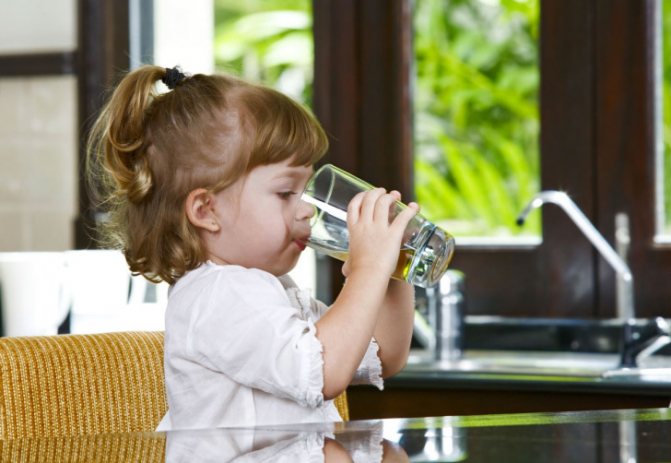
It is very important to teach your child to drink clean, still water.
The color of children's urine is often affected by medications taken. These include:
- Aspirin;
- antibiotics of the cephalosporin group;
- sulfonamides;
- Riboflavin;
- Furagin.
If the results of a urine test reveal pathological changes in the baby’s health, drug treatment is indicated. It includes:
- drugs that lower blood pressure and have a diuretic effect - for kidney diseases;
- hepatoprotectors – for liver damage;
- antispasmodics, antibiotics, analgesics - for urolithiasis.
If a change in a child’s urine is associated with any pathology, then treatment should be prescribed by a doctor. Drugs and their dosages are determined depending on the clinical picture of a particular disease and the age of the small patient.
Acute pyelonephritis in children
Urinary tract infection - pyelonephritis in children - can begin with a high temperature (more than 38.5 0C) without other signs of illness. However, this is not yet a reason to be nervous. You need to call a pediatrician. But if a child has difficulty writing against the background of a fever, or has pain in the abdomen or lower back, immediately call an ambulance.
Symptoms of pyelonephritis in children
With pyelonephritis, it is almost always difficult for a child to write. Moreover, this can manifest itself in different ways. There are delays in urination, and, on the contrary, frequent urges. Urine is usually very dark and cloudy. Sometimes it hurts for a child to go to the toilet; he cries even at the sight of a potty. All this is a reason to suspect pyelonephritis in children - inflammation of the kidney tissue due to a bacterial infection.
- It is advisable to prepare the child’s urine for analysis before the ambulance arrives. Wash it well with soap and collect the urine from a medium stream into a sterile glass container (it is best to boil the container first). To prescribe precise treatment and monitor its progress, doctors will need bacteriological urine culture. And it must be done before taking antibiotics, which the baby will be prescribed in the hospital, because antibacterial drugs will blur the picture. So you will undoubtedly help the doctors and the child if you take care of the test in advance.
- Before the ambulance arrives, ibuprofen in an age-appropriate dosage will help alleviate the child’s condition. It has not only an antipyretic, but also an analgesic effect.
Treatment
If the urine has changed its color and acquired a dark tint, then, even taking into account the fact that this may not indicate the presence of a disease, the appearance of such a symptom cannot be ignored. The only right decision would be to go to a doctor who will prescribe a urine test and recommend an ultrasound screening of the pelvic organs, as well as a serological test for antibodies to hepatitis.
Only after the reason why the urine of a 4-year-old child, younger or older, has become dark is precisely established, will the specialist develop a treatment regimen, individually for each clinical case. When diseases are identified, therapy is aimed at eliminating them. And if the color change occurs as a result of eating certain foods or drinking irregularities, then a corrective diet is prescribed.
The child has difficulty breathing
Shortness of breath almost always accompanies high fever in children. However, the mother needs to know in which cases, if the child has breathing problems, urgent help is required.
Respiratory failure in children.
This condition can develop both with pneumonia and with severe obstructive bronchitis. The nasolabial triangle on the baby’s face turns blue, it feels like he is fighting for every breath. Breathing may become very loud and rapid. Don't waste time, call the emergency room!
Foreign body in a child.
A child may choke on a piece of food or accidentally inhale a small object. A foreign body in a child’s respiratory tract is manifested by an annoying cough that does not stop even at night. It feels like the child is trying to clear his throat. Call an ambulance if this continues for more than two to three hours. In the hospital, the child will have a chest x-ray.
Urine color in infants and older children
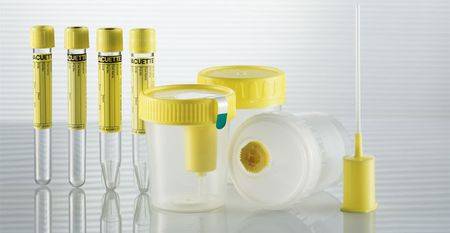
At different ages, urine in children has a certain color, smell and density. In a one-month-old baby, it is less pigmented than in a 3-month-old baby, and in older children, its color is less saturated compared to the shade of an adult’s urine.
In the first few days of life, the baby's urine is light-colored. Then its color changes from light yellow to amber. His urine does not contain any suspensions or mucus inclusions. In a healthy baby it is transparent. Normally, newborn urine has a mild odor. Urine in older children is yellow; when fresh, it should not have a strong smell or contain foreign components.
Diseases are primarily reflected in the physical parameters of urine. The doctor determines the presence of pathological changes in the body by its appearance and smell. In the presence of a particular disease, urine can become discolored or turn yellow, orange, or dark. Moms need to know what kind of urine is healthy for different age groups of babies.
A baby's urine is pale in color. This is explained by the fact that during the first months of life, the functioning of the kidneys begins to develop, and the diet consists only of mother’s milk or formula.
If children's urine has become colorless and its volume has increased, this may indicate various pathologies. These include:
- Diabetes insipidus (more details in the article: symptoms of diabetes insipidus in children). The disease is accompanied by constant thirst, and due to the large amount of water consumed, the urine becomes less pigmented.
- Diabetes.
- Kidney failure. The disease is associated with impaired kidney function; for this reason, the necessary water is not absorbed by the body, which can cause dehydration.
Colorless urine also occurs when consuming foods that contain a lot of water. The kidneys intensively remove the incoming fluid, which explains the light color of the urine. The use of diuretics also causes it to become colorless.
In some cases, the child’s urine turns white. This occurs due to disruption of the genitourinary system. Also, white urine is a sign of filariasis when the level of lymph in it increases. Dehydration, visiting a bathhouse or sauna can cause urine to turn white.
Yellow
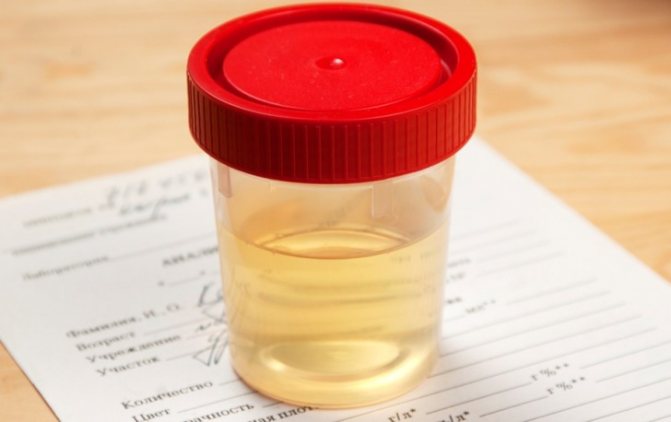
On days 7-10 of life, urine in infants acquires a brick-yellow color, which is associated with the development of the genitourinary system of the newborn.
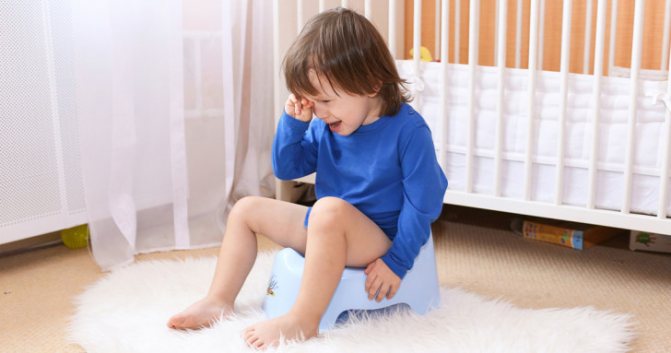
A change in urine color may be a primary symptom of a serious illness.
False croup in children
Some viral colds can cause croup, which is inflammation and swelling of the larynx. Children with allergies are at risk. Croup, or stenosing laryngotracheitis, develops more often due to a combination of causes: penetration of a virus and an allergen into the respiratory tract.
Symptoms of false croup in children
The child begins to have a frequent, barking, dry cough; when inhaling air, a loud whistling sound is heard. The child is afraid, and this further aggravates his condition. Before the doctors arrive, your first priority is to calm your baby. Sit him on your lap, hug him tightly, try not to be nervous, because your emotions are transmitted to the child.
Provide a flow of fresh air into the room. Open all the windows wide or even go outside with your son or daughter. The main thing is to make it easier for the child to breathe.
Inhaling a soda solution will also relieve laryngeal spasms in children. While you are calming your child, ask your husband to dissolve a pack of soda in a warm bath. Let the child breathe this moist air until paramedics arrive. By the way, if you do everything correctly, the attack of false croup will end in 20-30 minutes. And then the ambulance will arrive.
Remember: if a child has a spasm of the larynx, mustard plasters, warming ointments for the chest and back, and aromatic oils are contraindicated. And also excessive parental nervousness. Before the doctor arrives, an inhaler-nebulizer will help with an attack of false croup in a child. Check with your doctor which model is preferable in your case and what medicinal solutions should be used. But in any case, call an ambulance at the first sign of difficulty breathing in children.

